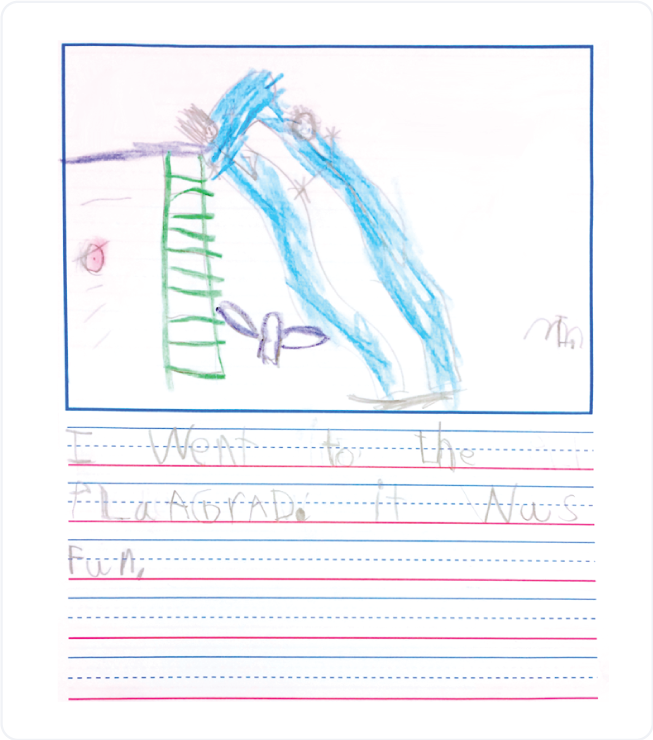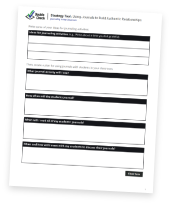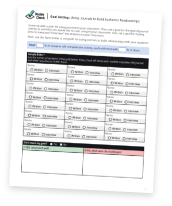Strategy: Using Journals to Build Authentic Relationships
How To
There are many different ways journals can be used.
1) Give the students a specific topic of interest to write about:
- For late 1st grade-5th grade, have students in your classroom write about specific topics.
- For younger students, encourage students to draw pictures about topics or activities.
If you want to know more about what your students do at home, then you can assign students to write about what they did over the weekend and then read and respond to the journal on Monday.
Examples:
- What did you do this weekend?
- What was your favorite part of your weekend?
- What will you be when you grow up?
- What are your favorite things to do at school?
2) Meet with each student to “interview” them about their journal and ask follow-up questions.
Examples:
- I see you went shopping with your mom. What did you help her find?
- I see you went to the park. What did you do there?
- I see you had a playdate with Abby. What did you do together?
Example Journal Entry and Dialog:

Teacher:
Kennedy, this is a great journal entry. It looks like you went to the park and had fun. Who did you go with?
Kennedy:
I went with my mom and dad. My mom went down the slide with me.
Teacher:
What was the best part?
Kennedy:
My dad helped me on the monkey bars. I almost made it across.
Teacher:
Have you been working on making it across the monkey bars? I see you practicing at recess. You are getting really good.
Strategy Tool

Reflection

Goal Setting

References to Other Relevant Resources:
Ronroy, M., Sutherland, K., Haydon, T., Stormont, M., & Harmon, J. (2009). Preventing and ameliorating young children’s chronic problem behaviors: An ecological classroom-based approach. Psychology in the Schools, 46, 3-17.
Dalton, J., & Watson, M. (1997). Among friends: Classrooms where caring and learning prevail. Oakland, CA: Developmental Studies Center.
Jones, V. F., & Jones, L. S. (2001). Comprehensive classroom management: Creating communities of support and solving problems. Boston, MA: Allyn and Bacon.
Lehr, C. A., & Christenson, S. L. (2002). Best practices in promoting a positive school climate. In A. Thomas & G. Grimes (Eds.). Best practices in school psychology IV Vol. 1 (pp. 929-948). Bethesda, MD: National Association of School Psychologists.
Pianta, R. C. (1999). Enhancing relationships between children and teachers: School psychology book series. Washington, DC: American Psychological Association.
Stormont, M. (2007). Fostering resilience in young children at risk for failure: Strategies for K-3. Upper Saddle River, NJ: Pearson.